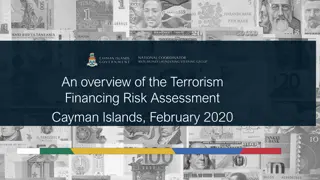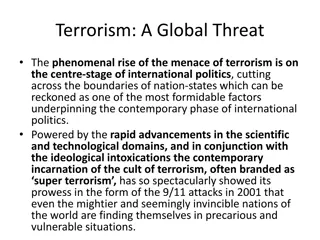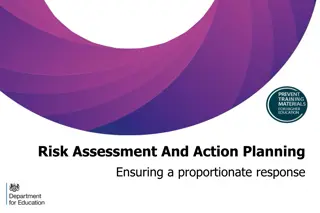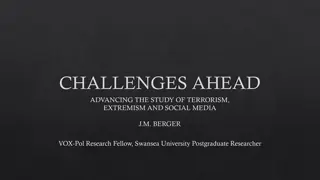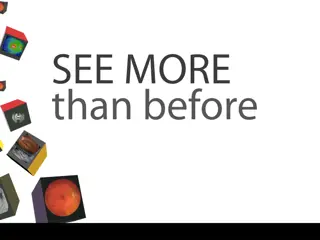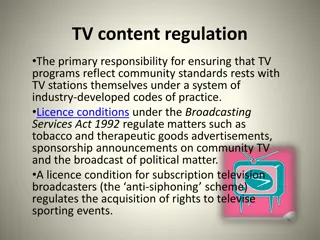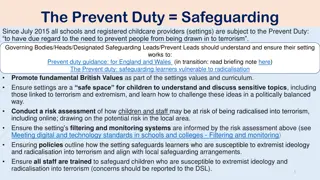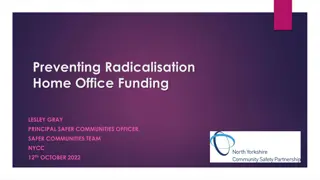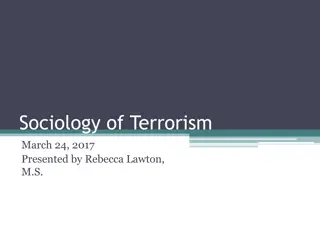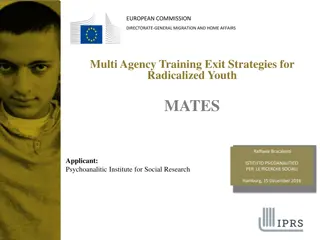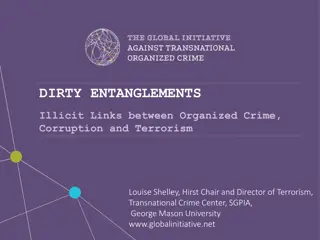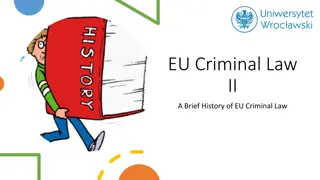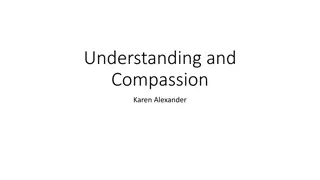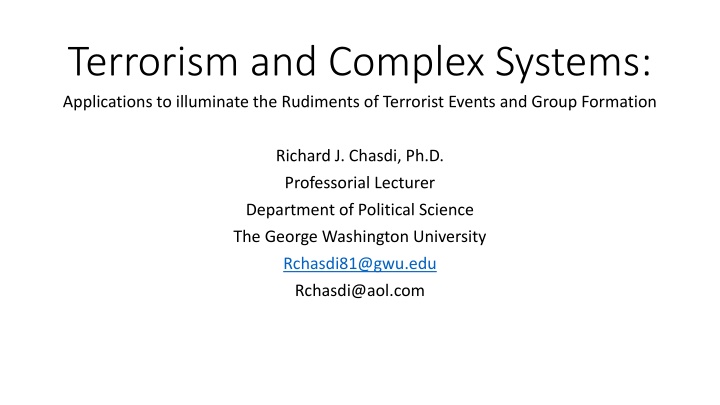
Applications of Complex Systems Analysis in Understanding Terrorism
Explore the intricate connections between stakeholders, political/economic events, and terrorist activities. Discover how different levels of analysis, from individual to international, shed light on the formation and actions of terrorist groups through a case study on the Tigantourine Gas Plant attack. Richard J. Chasdi's insights provide a comprehensive understanding of the multifaceted nature of terrorism and its root causes.
Download Presentation

Please find below an Image/Link to download the presentation.
The content on the website is provided AS IS for your information and personal use only. It may not be sold, licensed, or shared on other websites without obtaining consent from the author. If you encounter any issues during the download, it is possible that the publisher has removed the file from their server.
You are allowed to download the files provided on this website for personal or commercial use, subject to the condition that they are used lawfully. All files are the property of their respective owners.
The content on the website is provided AS IS for your information and personal use only. It may not be sold, licensed, or shared on other websites without obtaining consent from the author.
E N D
Presentation Transcript
Terrorism and Complex Systems: Applications to illuminate the Rudiments of Terrorist Events and Group Formation Richard J. Chasdi, Ph.D. Professorial Lecturer Department of Political Science The George Washington University Rchasdi81@gwu.edu Rchasdi@aol.com
My book, Corporate Security Crossroads: Responding to Terrorism, Cyberthreats, and Other Hazards in the Global Business Community (Praeger Publishers, ABC- CLIO, 2018) makes use of: A. Complex Systems Analysis stakeholders countries, terrorist groups, IGO s, NGO s (62) explanatory factors - stressors political/economic events inclusive of stakeholder actions (62) endogenous - to terrorism systems exogenous - to terrorism systems Direct and Indirect connections first, second, third, fourth order ripple effects Coupled with: Neo-Realist Three Level Analysis (Kenneth N. Waltz, Man, the State, and War 1959; Nye 1993) 3rdimage international political systems factors affecting 3 or more states. Examples: Cold War, Global War on Terrorism, Asian Economic Crisis (1997-8), drought, famine, mass migrations, pollution, disease, imperialism,
Chasdi (continued) 2ndimage nation-state level factors Examples: political solidarities/composition of society (Coalition of Rye and Iron between Junker landowners and industrialists in early 20thcentury Germany), level of socio-economic development, ethnic politics, regime type, geography, topography, etc. 1stimage individual level/small group Individual leader qualities (Waltz 1959) and upper crust decision-makers Woodrow Wilson s strict Calvinist upbringing; J.F.K. s preference to ratchet up pressure on Nikita Khrushchev (1962); Kaiser Wilhelm II s personality. B. This version of Complex Systems Analysis leads to Interventions Point Policies Terrorism systems defined by national boundaries or region In some but not all cases, long-haul, (e.g., capitalism, imperialism) middle-run, (e.g., ethnic divisions) and short-run factors (e.g., terrorist group splintering/spinoff, recruitment, propaganda,) correspond with international, nation-state , and individual/small group explanatory factor placement.
Chasdi (continued) A Case Study: Tigantourine Gas Plant attack (2013 conducted by Mokhtar Belmokhtar s Battalion of Blood and Movement for Oneness and United in West Africa (MUJAO). MUJAO is an AQIM splinter group ) Tigantourine consortium owned by Statoil (Norway), Sonatrach (Algeria) and BP (63). International-Level Factors (66-67) 1. French imperialism; 2.Islamic Revivalism; 3. Islamist Terrorism; 4. End of Cold War; 5. North-South Divide ; Nation-State Level Factors (67) 1. Malian ethnic tensions; 2. Bamako s Divisive Political Military Policy; 3. French military policy; 4. Corrupt Arab regimes; 5. French foreign policy; 6. Tuareg separatism; 8. French National Policy Individual/Small Group Level Factors (67-68) 1. sub-national actors (e.g. Anser Dine a Tuareg separatist group ( Defenders of the Faith ), Islamic extremists. 2. personal rivalries (e.g., Mokhtar Belmokhtar and AQIM s Abdelmalek Droukdel; Mokhtar Belmokhtar and AQIM chieftain Abu Zeid); 3. Terrorist Group Life-Cycle (e.g, Salafi Group for the Call and Combat + al-Qaeda = AQIM)
Chasdi (continued) Applications The interventions point analysis makes it possible to review and likely improve security conditions for MNC s in host countries. Shortcomings not able to account for interactive effects (59). A. Traditional (and defensive) P-2 ( personal security and property protection ) Improvement (empirical)(57) X2 X1 X1 = empirical (existing) security at site of terrorist attack empirical X2 = augmented P-2 security (e.g., armed guards, additional outposts, new communications equipment lock and key procedures (57) normative what is the probable increase? B. Non-Traditional Soft-line Security Improvement Y2-Y1 Y1 = soft-line security at site of attack ( empirical ) Y2 = augmented soft-line security ( normative ). What is the probable increase?
Chasdi (continued) The Total Security Measure Index (TSM) (58). This is a combined estimate of security enhancement In turn that makes it possible to compare across case studies. It sums up hypothetical value added (59) X1-X2 + Y2-Y1 Qualitative judgements are made about security conditions (57): none/ low-level impacts = 10 points medium-level impacts = 50 points high level impacts = 100 points


